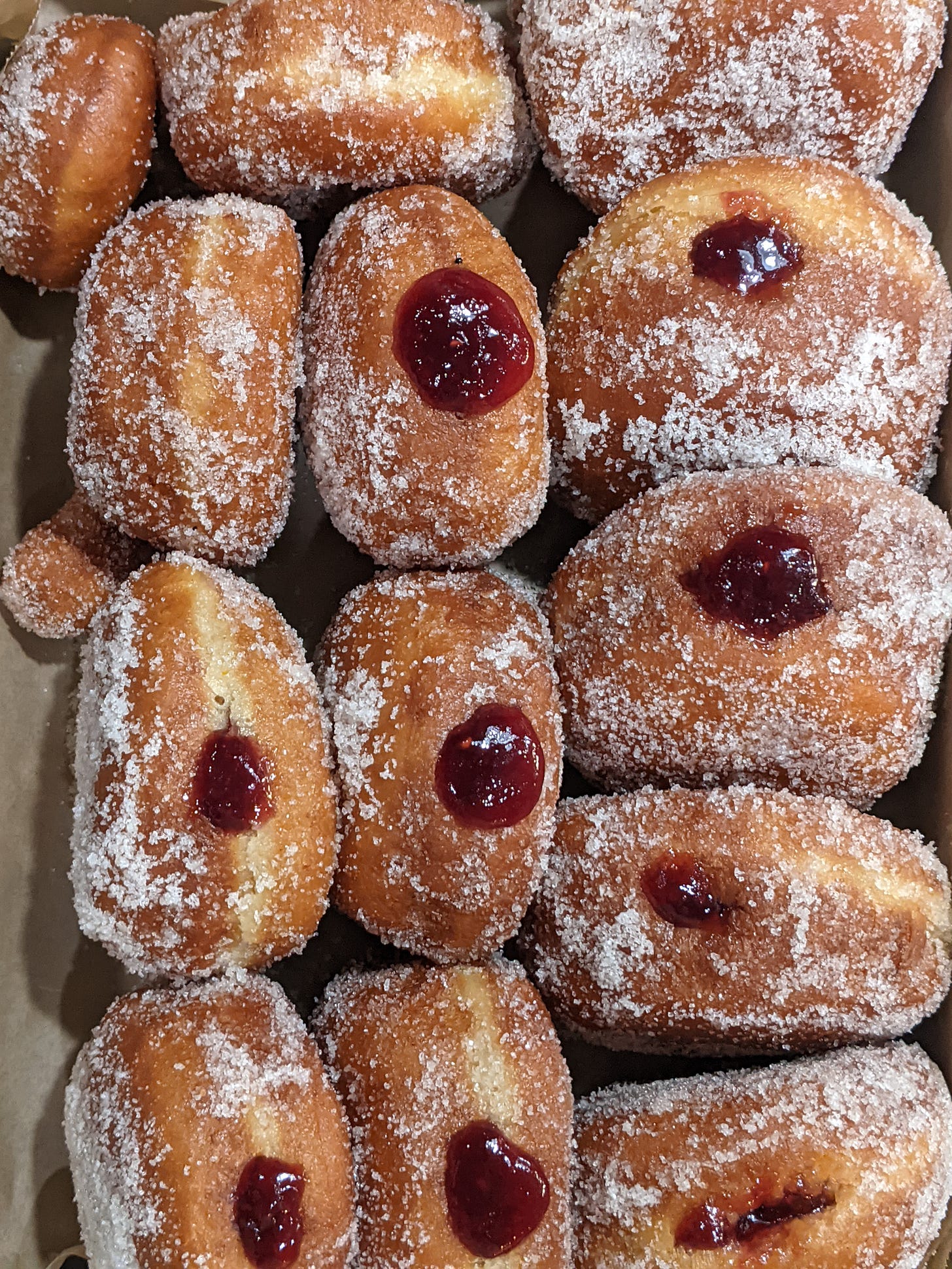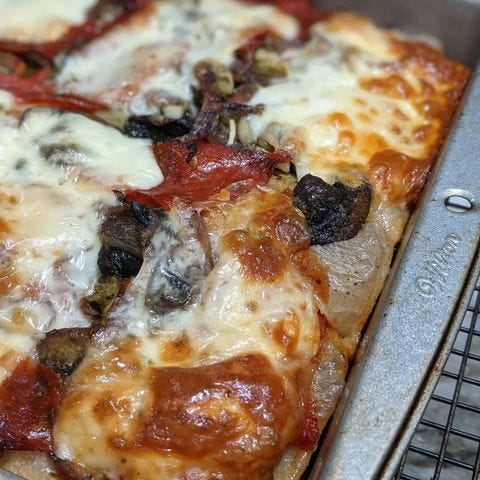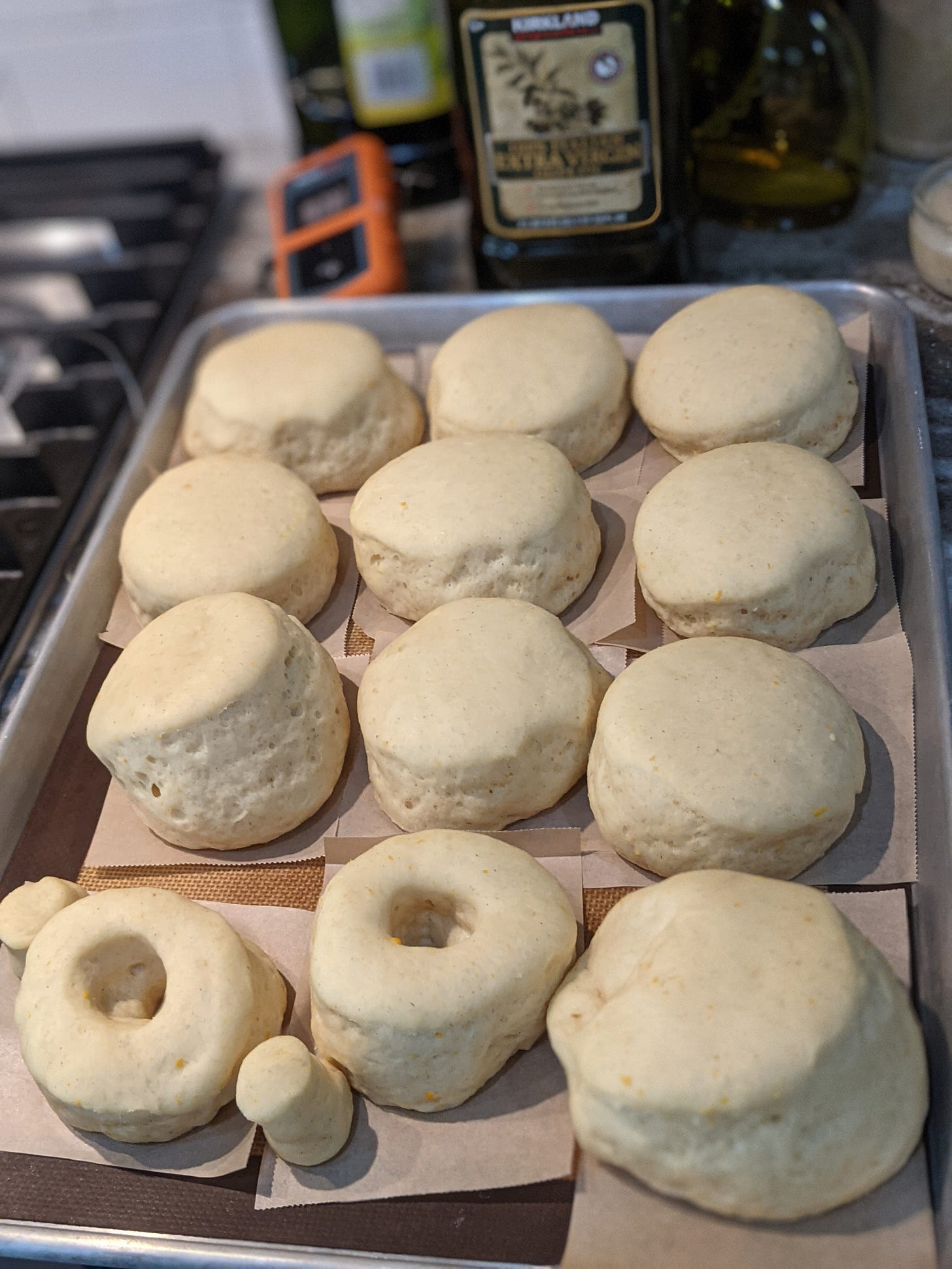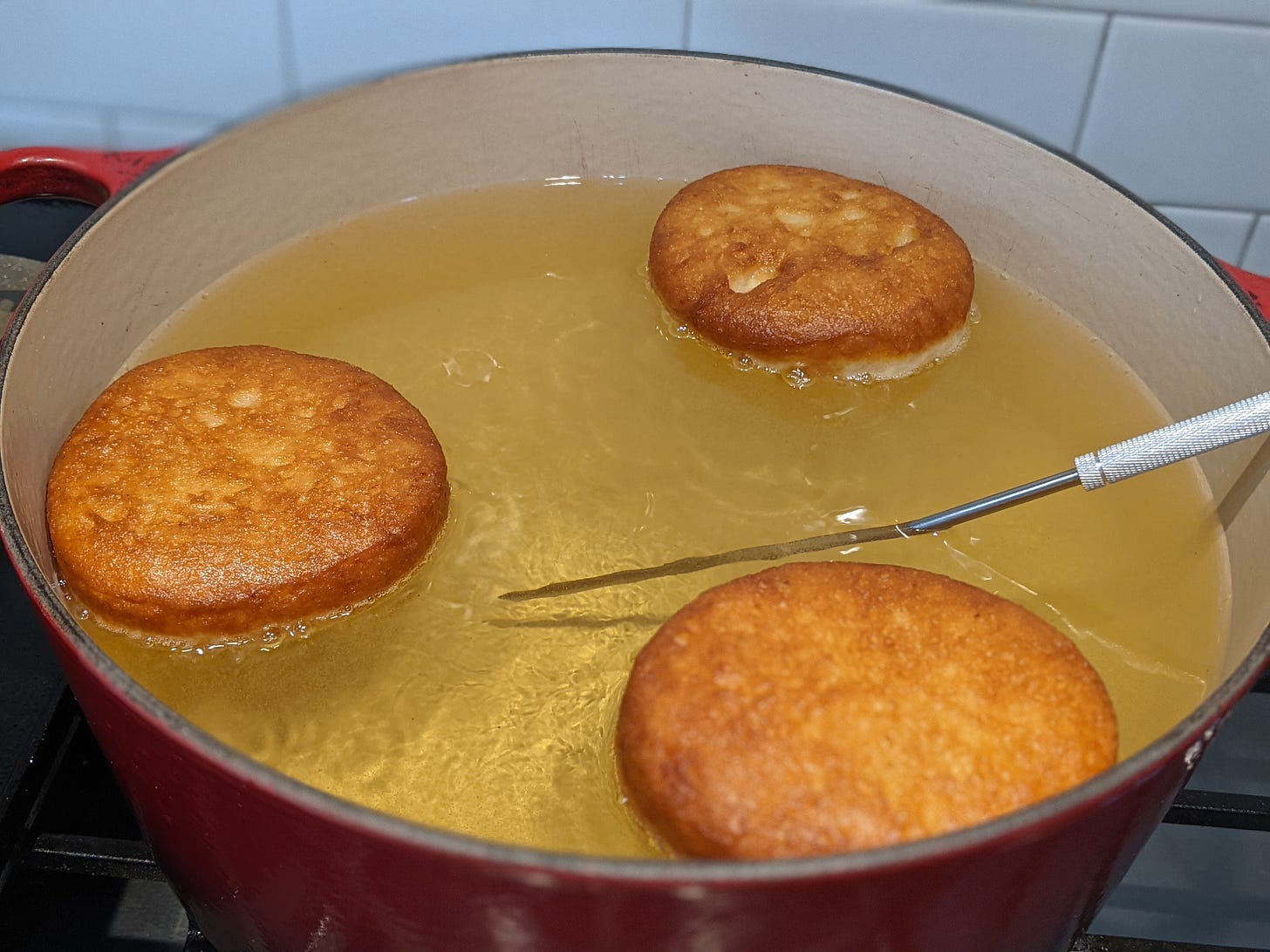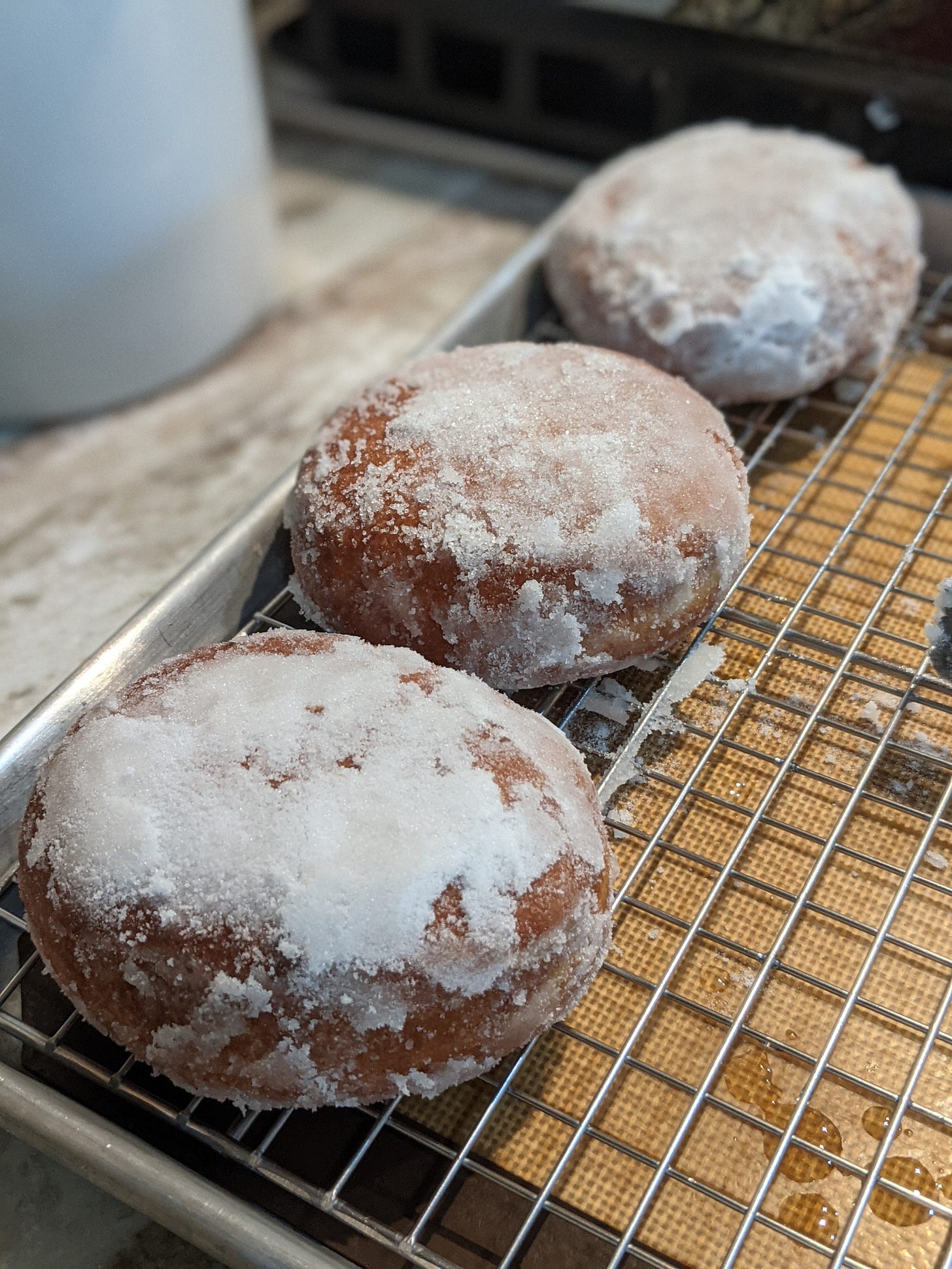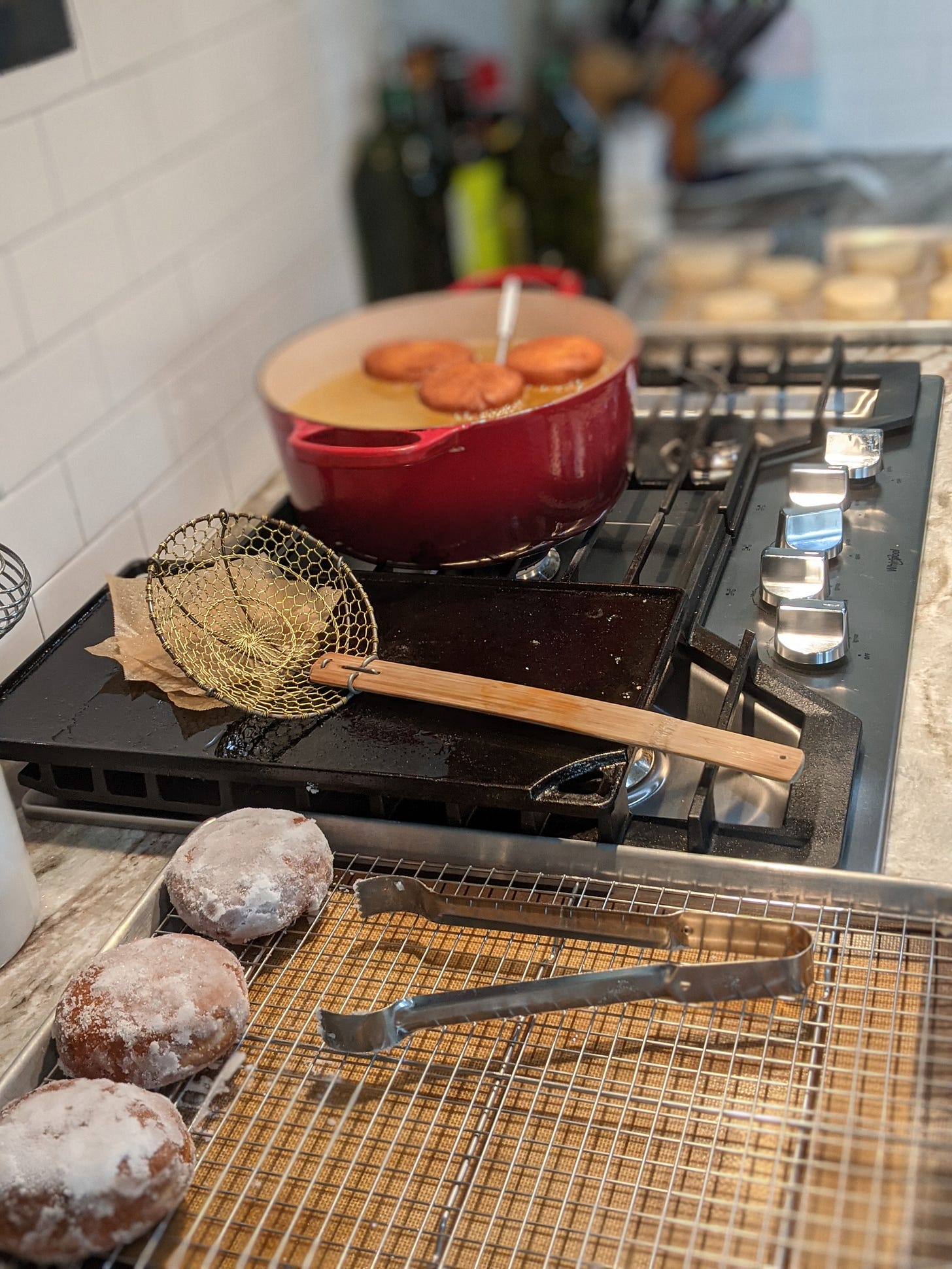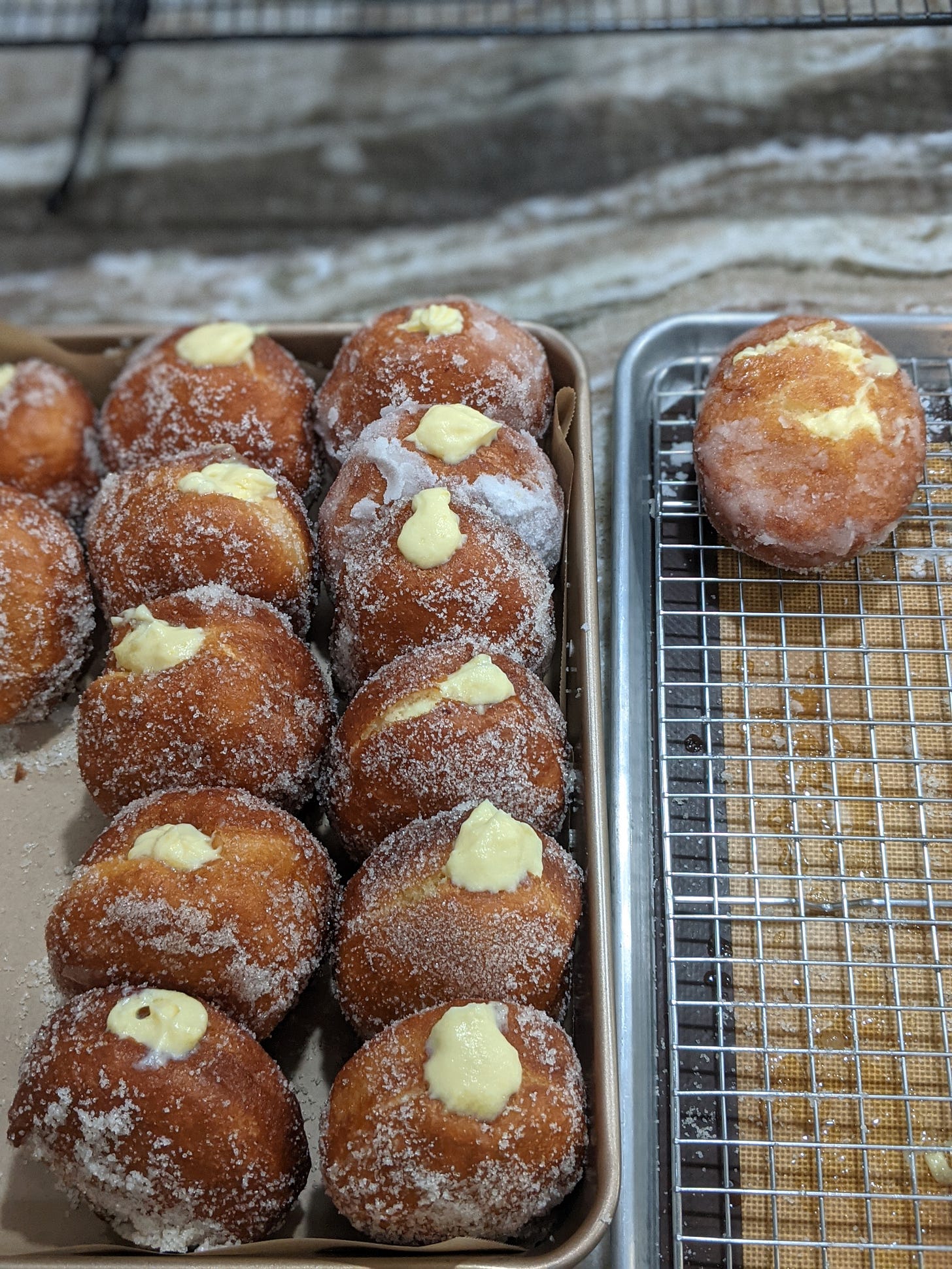
Americans call them jelly donuts. But in Latin/Italian countries, they’re lighter, deeper in flavor, and harder to come by.
I’m fond of making bomboloni, or bombe. I’ve tried two different recipes from Inside the Rustic Kitchen and An Italian in My Kitchen. They’re okay, but rise inconsistently, depending on the time, atmosphere, temperature, and the thickness of the dough.
Once they came out flatter than pancakes, and that was it. I was on the hunt for something different, something better.
They also tend to fry up a little dense and dry, which is odd, considering the milk, eggs, and butter involved.
While perusing Emma Fontanella’s website (I’m in love with her no-knead, bubbly focaccia, which rises and bakes higher than any other focaccia recipe), I found her Italian Donuts (bomboloni, graffe).
She swears by Yukon Gold potatoes (medium, 125 grams), to keep the texture soft.
Science, bitch.
I don’t know how she gets her focaccia to rise so high, but I trust her, so I went ahead and made her fluffy Italian donuts for bible study this past Monday, along with pastry cream (Inside the Rustic Kitchen) for the filling.
Mic drop.
Yeah, baby!
Her donuts turned out so well, I made a second batch the next day for my friends (and ourselves), filled with raspberry jam.
This recipe is so much easier to follow, and most importantly, turns out consistently soft, flavorful donuts, whether you fill them (as bombes) or put a ring around it for the kids.
You taste the buttery, milky dough with citrus notes from the grated lemon and orange, as well as whatever filling you desire, not just sugar, like with American Krispy Kremes and powdered sugar Hostess donut holes.
Fontanella suggests grated lemon, but if you have oranges laying around, grate those too for even more depth of flavor and spring-time brightness.
Some helpful tips along the way:
Invest in a ricer to remove any lumps in the boiled potatoes. I tried putting them through a sieve and it hurt my hand too much pressing.
As with biscuits and scones, cut the rounds higher than 1/4-1/2” up to just under 1”. They don’t rise that much otherwise.
You can use the bottom of the tip of an icing nozzle to cut out donut holes for the graffe, or ring donuts.
I wouldn’t twist the dough rounds out, even though the recipe says it’s okay. Buy round cutters and press down hard.
Let them rise in the oven with the light on, and check after about an hour. They may not need to go for much longer.
You can totally make the dough and leave it in the fridge for the first overnight rise. Take it out the next day, leave it to thaw for two hours, before proceeding with the next step (rolling out, then cutting dough rounds).
Time the heating of the frying oil to the second and last rise, about a half-hour into it. Use a thermometer to keep the temperature to 350. You have a wiggle room of 10 degrees, more or less.
If you have a metal flipper/spatula, you don’t really need to cut squares of parchment for the dough rounds to sit on. Just slide the flipper underneath each dough round hard and fast, like a pizza, before dipping into the hot oil.
Go by eye, not the one to two minutes of frying time. Watch the bottoms, as soon as they get golden-brown, flip over. They shouldn’t go longer than a minute really.
If you can’t find caster sugar, order it online. Caster sugar is a cross between granulated and powdered sugar. They say you can whiz the granulated stuff in a food blender just before it turns into powdered dust, but it’s easier to go buy the real thing from Britain, no? Caster sugar sticks to the donuts better, anyway; whereas granulated American sugar just falls right off.
Try Emma Fontanella’s Italian Donuts for your loved ones. Fill it with whatever you have handy, if you’re not inclined to stand over the stove and stir pastry cream together for 10-15 minutes. Nutella works, too. Or plain Jane cinnamon-sugar.
Lay them out sitting upright, so everyone can see the pretty filling on top.




